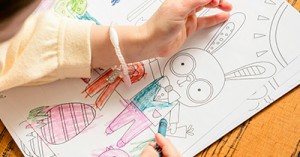Kinaesthetic learners, also known as tactile learners, thrive on physical movement and hands-on experiences. They learn best through activities that involve touch, movement, and manipulation of objects. The following information provides information on How To Identify Kinaesthetic Learners, Characteristics of Kinaesthetic Learners, Strategies to Support Kinaesthetic Learners and more.
How To Identify Kinaesthetic Learners
Identifying kinaesthetic learners, also known as tactile learners, involves observing their behaviors and preferences in learning environments. Here are some key characteristics to look for:
-
Hands-On Learning: Kinaesthetic learners prefer to learn by doing. They enjoy activities that involve physical movement and hands-on experiences.
-
Movement and Fidgeting: These learners often have difficulty sitting still for long periods and may fidget or move around frequently.
-
Expressive Gestures: They use expressive gestures and body language while speaking or explaining concepts.
-
Trial and Error: Kinaesthetic learners often learn best through trial and error rather than by reading or listening to instructions.
-
Preference for Practical Applications: They are most engaged when learning through real-world situations and practical experiences.
-
Enjoyment of Physical Activities: They tend to excel in activities like sports, dance, and building projects.
To support kinaesthetic learners, incorporate activities that involve movement, hands-on experiences, and practical applications.
Characteristics of Kinaesthetic Learners
-
Active Engagement: They prefer to be actively involved in the learning process, often excelling in activities like building models, conducting experiments, and participating in sports.
-
Difficulty Sitting Still: They may struggle to sit still for long periods and often fidget or move around.
-
Expressive Gestures: They use expressive gestures while speaking or explaining concepts.
-
Improved Memory Through Movement: They retain information better when it is presented through physical demonstrations or hands-on experiences.
-
Preference for Practical Applications: They are most engaged when learning through real-world situations and practical experiences.
Supporting Kinaesthetic Learners
Supporting kinaesthetic learners effectively involves incorporating activities that engage their sense of touch and movement. Here are some strategies to make the most of their learning style:
-
Hands-On Activities: Incorporate activities that involve physical manipulation of objects. For example, use building blocks, puzzles, and models to teach concepts.
-
Interactive Lessons: Make lessons interactive by using props and materials that children can touch and explore. For instance, if teaching about rocks, let them handle different types of rocks to understand their characteristics.
-
Movement-Based Learning: Integrate movement into learning. Have children use their bodies to form shapes, act out stories, or participate in physical activities that reinforce the lesson.
-
Outdoor Exploration: Take learning outside. Nature walks, gardening, and exploring different textures in the environment can be very effective for kinaesthetic learners.
-
Art and Craft: Encourage creative activities like painting, sculpting, and crafting. These activities allow children to express themselves and learn through tactile experiences.
-
Role-Playing: Use role-playing and drama to teach social skills, history, and other subjects. Acting out scenarios helps kinaesthetic learners understand and remember information.
-
Sensory Play: Provide sensory bins filled with materials like rice, beans, or sand for children to explore. This can help them calm down and focus while learning.
-
Practical Applications: Relate lessons to real-world situations and practical applications. This helps kinaesthetic learners see the relevance of what they are learning.
By incorporating these strategies, you can create a more engaging and effective learning environment for kinaesthetic learners.
Further Reading
Implementing Different Learning Styles When Teaching Children
Learning Styles According To Howard Gardner
Tactile Learning







 As an Educator in Australia, your pay rate falls under the Children’s Services Award 2010. This award states the minimum amount that an employer can
As an Educator in Australia, your pay rate falls under the Children’s Services Award 2010. This award states the minimum amount that an employer can When working as a qualified Early Childhood Teacher (with a university degree) within a service, your rate of pay will come from the Educational Services
When working as a qualified Early Childhood Teacher (with a university degree) within a service, your rate of pay will come from the Educational Services When working as a Diploma Qualified Educator your pay rate is from the Children's Services Award 2010. This Award states your minimum rate of pay
When working as a Diploma Qualified Educator your pay rate is from the Children's Services Award 2010. This Award states your minimum rate of pay When working as a Cert 3 Qualified Educator, your pay rate is from the Children's Services Award 2010. This Award states your minimum rate of
When working as a Cert 3 Qualified Educator, your pay rate is from the Children's Services Award 2010. This Award states your minimum rate of Educational Leaders play a crucial role in their early childhood service by ensuring that the educational program aligns with best practices and supports the holistic
Educational Leaders play a crucial role in their early childhood service by ensuring that the educational program aligns with best practices and supports the holistic In early childhood education and care, ratios are more than a technicality—they are a frontline safeguard. Every child deserves responsive supervision, emotional connection, and developmental
In early childhood education and care, ratios are more than a technicality—they are a frontline safeguard. Every child deserves responsive supervision, emotional connection, and developmental With the new national child safety reforms kicking in on 1 September 2025, early childhood services like yours have a real opportunity to lead the
With the new national child safety reforms kicking in on 1 September 2025, early childhood services like yours have a real opportunity to lead the Here’s a comprehensive Mobile Phone and Smart Watch Policy tailored for early childhood education and care (ECEC) services in Australia, aligned with the latest 2025
Here’s a comprehensive Mobile Phone and Smart Watch Policy tailored for early childhood education and care (ECEC) services in Australia, aligned with the latest 2025 The Sea of Fish Challenge is a national initiative that invites children, educators, families, and communities to create and display fish artworks as a symbol
The Sea of Fish Challenge is a national initiative that invites children, educators, families, and communities to create and display fish artworks as a symbol Across the early childhood education and care sector, educators are sounding the alarm: current staffing ratios are insufficient to deliver safe, meaningful, and developmentally appropriate
Across the early childhood education and care sector, educators are sounding the alarm: current staffing ratios are insufficient to deliver safe, meaningful, and developmentally appropriate


